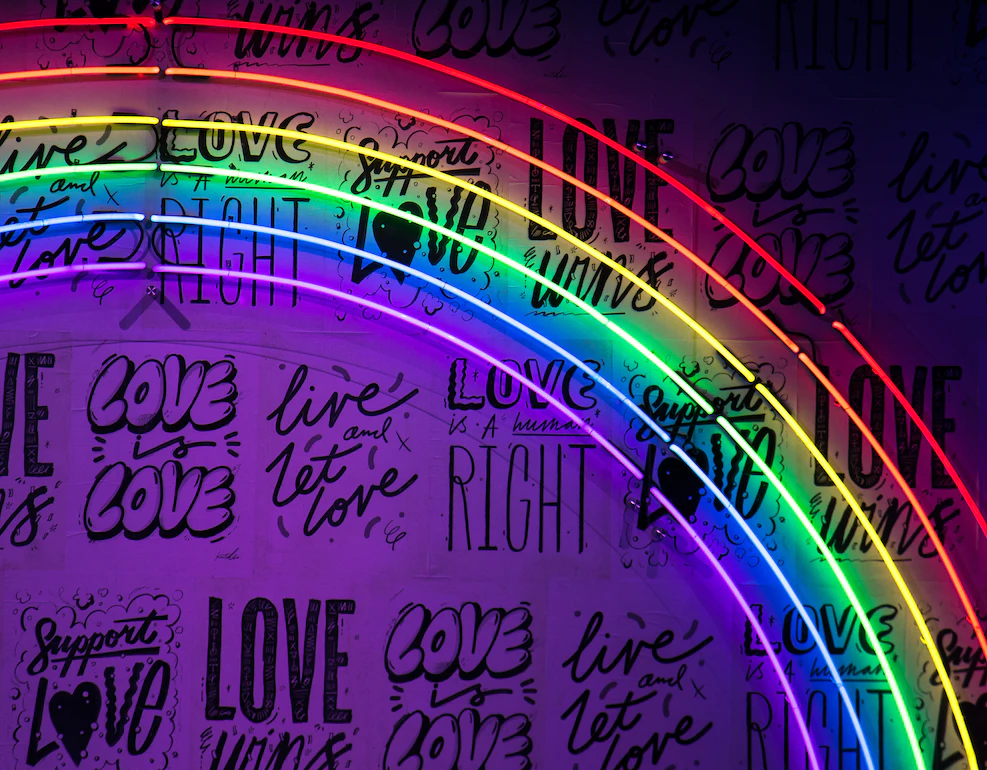Rainbows included on the graphic identity of large corporations only during Pride month is perhaps the tip of the iceberg of the recent and growing phenomenon called consumer queerbaiting, also known as rainbow washing. According to a report on the panorama of the diverse economy by Portafolio.co (2021), the purchasing power of the LGBTIQ+ community includes approximately 7% of the population, that is, 3.2 million people, even representing companies with diverse and inclusive profitability growth of 27%.
What is consumer queerbaiting or rainbow washing?
Consumer queerbaiting or rainbow washing is basically when commercial entities show support for the LGBTIQ+ population only during pride month to sell more and in some cases, it is even discovered that they support politicians who intend to enact legislation that violates the life of the group queer, has as its core objective to clean up the image and thus establish positive perceptions about its support for the collective to appear inclusive and comply with market demands in terms of corporate social responsibility, however, it is only a curtain of smoke since its internal communication, policies and, other factors of repercussion in the human are alien to the inclusion and respect to diverse communities.
How was this phenomenon born?
To understand consumer queerbaiting or rainbow washing, it is necessary to speak of an umbrella term that encompasses them, queerbaiting, a word composed of queer, which is diffuse in its definition, but which alludes to the abnormal or strange, and baiting or bait that can be understood as a lure. Thus, the term queerbaiting could be interpreted as content that seeks to attract the attention of the LGBTIQ+ population through empty allusions to queer symbolism. This denomination became popular in cyberspaces around 2010, particularly on the Tumblr website as indicated by Martínez (2019), and was taken by the fandom as a form of activism to denounce the practice by producers. Queerbaiting, according to the taxonomic model proposed by Woods and Hardman (2021), this phenomenon manifests itself in three categories: social, cultural, and consumer.
How does this phenomenon manifest itself?
Social queerbaiting refers to those daily encounters by cisgender and heterosexual people who, through queer coding, seek some benefit by generating interest towards the LGBTIQ+ population by adopting the language, and clothing, among other attributes and behaviors that could be interpreted and read as queer. To account for this, it is relevant to mention Bad Bunny and Harry Styles who, by not considering themselves part of the LGBTIQ+ community, become empty voices within the collective since their relationship with queerness is reduced to an aesthetic instrumentation for marketing purposes that in the process, she detaches herself from her social background and fights for equity and inclusion. In contrast, actor Billy Porter, who is a community member and activist, wears queer clothing and displays both in his artistic and professional life and, in his personal life.
On the other hand, cultural queerbaiting is one of the categories with the greatest visibility due to its media nature and being the entertainment alternative that many people opt for. Cultural queerbaiting is even called and understood only as queerbaiting, from this the complaints and reproaches towards the practice began, its execution occurs mainly in the cinematographic field, however, it expands to all audiovisual production distributed as a form of entertainment, to account for this some cases of cultural queerbaiting that have been of great notoriety include the 2010 series Sherlock since the relationship between the protagonists Sherlock Holmes and John H. Watson is coded as a couple, however, the producers, actors and cast members deny that this relationship is romantic, as is the case with Eve Polastri and Villanelle from the 2018 Killing Eve series.
Finally,
Consumer queerbaiting, also known as rainbow washing, which takes place in the field of marketing and advertising, consists of the creation of campaigns and communications that explicitly show members of the LGBTIQ+ community as protagonists, or the acceptance of queer symbology as the pride flag to make it part of its graphic identity, however, this inclusion is not interpreted as genuine since it is limited to pride month and there is no real and feasible support for the struggle of the queer movement.
Additionally, when executing advertising actions for a specific market niche, attention must be paid to its context and needs, understanding that it is a movement and its existence is not limited to one time of the year. To identify key points that allow the development of strategic communication and the intended message to be well written and structured to avoid dissonances, be consistent with the advertiser’s discourse and, in turn for the market, in this case, the LGBTIQ+ collective, is In other words, it means paying attention to certain elements to increase the probability of success in communication and achieve progress in terms of reshaping the narrative.
Implications
Exercising consumer queerbaiting, would be detrimental not only to the entity’s image, as it is perceived as inconsistent in its communication and internal actions, but also to queer people. In contrast, if all the influencing variables are taken into account and a communicative advertising strategy is structured to respond to social inclusion, corporate social responsibility will be achieved, contributing to an environment conducive to a society that is more aware and receptive to the differences of different groups. , provided voice and visibility.
Johannes Higuita
IAA Accredited Student, Universidad Pontificia Bolivariana – Medellín, Colombia.
Would you like to write for IAA Latam? Get in contact with us. We love listening to you!



